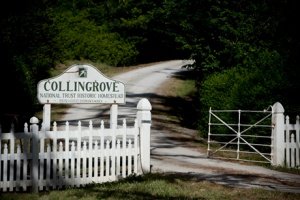For my Directed Studies project I am developing an interpretative plan for Collingrove Homestead. Recently I conducted an interview via email with Marcia Frost, current tenant and bed and breakfast business co-owner at Collingrove Homestead. Through this interview, I wanted to understand the current self-guided and guided tour program of the Collingrove Homestead Museum, gauging how frequently the museum is visited, the most popular aspects of the house for visitors, whether visitors know who lived at Collingrove Homestead and whether the museum has generated any business for the bed and breakfast.
The key issues that were identified through this interview were:
- That Marcia and the National Trust of South Australia would like a more self-managed approach to the tours. At the moment there are large wooden information paddles in each room of the museum, designed to inform people about the history of the house and the contents of each room, which are effective but Marcia feels could be updated.
- Only about 1-2% of visitors to Collingrove Homestead know who John Howard Angas was or are aware of the Angas family. I think this is an important aspect of the house that needs to be emphasised in order for people to understand why Collingrove Homestead is an important aspect of South Australia’s cultural heritage.
- The number of visitors to the property can vary considerably. The National Trust of South Australia have expressed that they would like to attract more visitors, especially younger visitors, to Collingrove Homestead.
- Marcia stated that she has received positive feedback about the tour from visitors; however, visitors would like to take photos of artefacts and rooms but are unable to due to The National Trust’s no photography policy.
These are issues I hope to address in the interpretative plan, in order to raise more public awareness for Collingrove Homestead and encourage more people to visit the property.

Entrance to Collingrove Homestead. Courtesy of The National Trust of South Australia.

